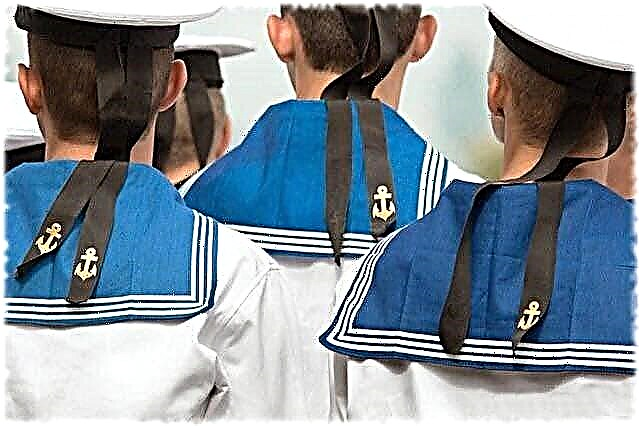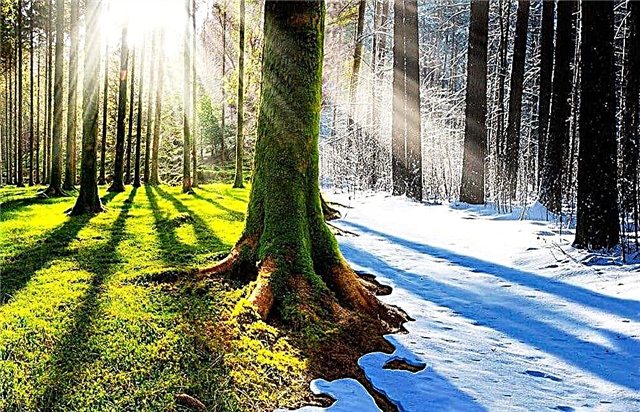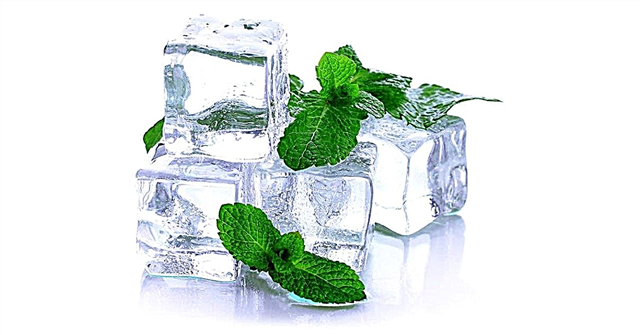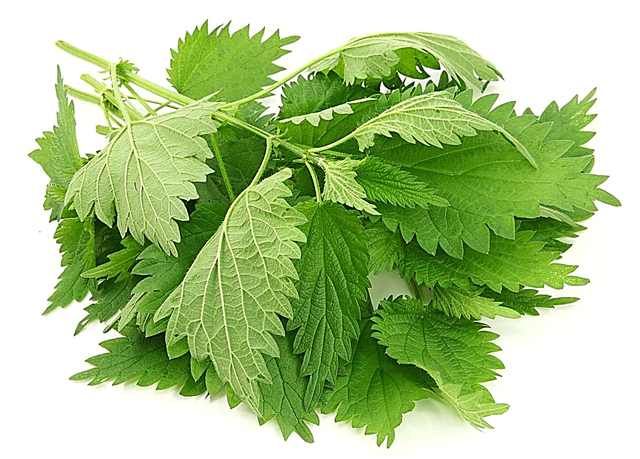
Geography of antarctica
Antarctica is the southernmost continent on the planet. Antarctica has an area of 14,200,000 square kilometerswhich is double the size of Australia.
98% of the land of Antarctica is covered with ice, the thickness of which in some places reaches 4.7 kilometers, - thus the crust covers almost all regions except the northernmost. The icy deserts of Antarctica are characterized by extremely low temperatures, strong solar radiation and incredible dryness.
Almost all precipitation falls in the form of snow and is limited to only a small territory, about 300 kilometers from the coast. In some regions, only 50 mm of precipitation may occur annually.
Interesting fact: Antarctica is the least populated continent on Earth: only 0.00008 people per square kilometer.
The lowest temperature that has ever been recorded on Earth was just recorded in Antarctica at the Vostok Antarctic station, located on the Polar Plateau, at -89.4 ° C. Even in such harsh conditions there is life, but it is possible only for extremophiles.

The temperature in the Southern Ocean does not change much throughout the year - it is constantly in the range of 1-2 ° C. In summer, ice covers 4,000,000 square kilometers of the ocean. The continental shelf of Antarctica extends 60 kilometers in length and 240 kilometers in width. Depth in these areas averages 500 meters. The bottom is a mixture of sand, mud and gravel.
The climate of the main part of Antarctica is very dry, but the western part of the continent and subantarctic islands are more suitable for life, therefore it is there that the fauna blooms and develops. These areas can receive up to 900 mm of rain annually - sometimes it rains there. The northern peninsula is the only place in Antarctica where in summer temperatures can rise above 0 ° C. It is because of humidity and temperature that the subantarctic islands are home to a wide variety of unique animals.
Fauna of antarctica

The main representatives of the Antarctic fauna are extromophiles, which have to adapt to extreme dryness and extremely low temperatures. The climatic severity of the main part of the continent contrasts strongly with the softness that distinguishes the Antarctic Peninsula and subantarctic islands - they have warm temperatures and relatively high humidity. The waters of the Southern Ocean, which bathe Antarctica, are mostly ice-covered. The open spaces are a more sustainable environment for life, both in the water column and at the bottom.
The Antarctic fauna is not particularly diverse in relation to other continents. Life on land is concentrated mainly in coastal areas. Birds nest on the most climate-friendly parts of the Antarctic Peninsula and subantarctic islands. Ocean waters are home to 10 species of cetaceans. Terrestrial vertebrates, although not distinguished by their diversity, take their quantity. A large density of representatives of vertebrate species lives in the ocean.
In Antarctica, no less than 235 marine animal speciesThe sizes of which vary from whales and birds to small sea snails, sea cucumbers and worms living in the mud. Antarctic animals have adapted to reduce heat loss, often with naturally warm, windproof coatings and large layers of fat.
The cold deserts of Antarctica have one of the least diverse fauna in the world. The habitat of terrestrial vertebrates is limited to subantarctic islands, and even then their number is small. Antarctica, including the subantarctic islands, does not have fully terrestrial mammals, reptiles, or amphibians.
Human activity, however, has led to the appearance of alien species in some areas, such as rats, mice, chickens, rabbits, cats, pigs, sheep, cattle, reindeers and various fish. Some species of insects also live here.
Life on the ocean floor, unlike land, is diverse and dense - up to 155,000 different organisms can live per 1 square meter. Climatic conditions under water do not differ much in different parts of the Southern Ocean, so the same species can be found everywhere. The habitat leads to deep-sea gigantism, so invertebrates here are much larger in size than their relatives in other parts of the world. Gigantism is believed to manifest itself due to low water temperatures and its oxygen saturation, combined with low metabolic rates.
Human activity and attempts to settle in Antarctica have a negative effect on the normal functioning of wild life, disrupting its natural processes. The extraction of fish resources jeopardizes and reduces the number of many large species seeking food in the open sea. Pollution, destruction of natural habitats and climate change pose enormous risks to the Antarctic natural kingdom.
Invertebrates
Most terrestrial invertebrates inhabit subantarctic islands. Although the number of species is not very large, the density of representatives of these species is high. In the most arid regions, only a couple of nematode species can live, one of which is always predatory.

Most invertebrates are able to survive at freezing temperatures, while individuals living on the mainland can survive even after freezing.
Ticks and collembole (foottail) are the most numerous representatives of arthropods, although here you can find various spiders, beetles and flies. On one square meter of subantarctic islands, up to 1,000 ticks and collembolans can be found. Insects play a critical role in processing dead plant material.
On the mainland, it is practically impossible to find macro-arthropods, and micro-arthropods mainly live in areas where there is vegetation and liquid water, which ensures the presence of vertebrates. Belgica antarctica, a wingless midge, is the only representative of insects found on the mainland.
Antarctica has also become home to a large number of earthworms, mollusks and micro invertebrates such as nematodes, tardigrades and rotifers.
Insects
The only insect found only in Antarctica is Belgica antarctica.
Belgica antarctica.

Belgica antarctica is an Antarctic midge that varies in size from 2 to 6 mm. It is an endemic species for Antarctica. The winglessness of the insect is most likely a natural defense, due to which the wind does not bring it to more severe areas of the mainland.
Although the temperature in the habitats of midges can reach -40 ° C, it cannot survive even -15 ° C, so they live at a depth of about 1 meter, where temperatures are stable throughout the year and range from 0-2 ° C. Belgica antarctica is able to accumulate trehalose, glucose and erythritol in the body, which allow them to survive low temperatures, as well as survive after freezing.
Interesting fact: With a size of only 2-6 mm, Belgica antarctica is the largest representative of all terrestrial life, as well as the only insect on the mainland.
Arthropods
Five species of euphazides live in the waters of the Southern Ocean, the most numerous of which is Antarctic krill. Most of the crustaceans of Antarctica use non-seasonal breeding species. Amphipods are abundant, eating a variety of foods - from algae, ending with other animals.

Crabs have traditionally never been recognized as part of the fauna, although recent research has proven the presence of three species in deep water areas.Initially, the teachings believed that crabs were in these places due to mass migration caused by global warming, and are a serious threat to the local ecosystem. But further research proved that they always lived in the waters of the Southern Ocean, just before that they were overlooked.
It is interesting to note that most arthropod species are unable to survive temperature changes, as they are vulnerable to even a slight increase.
Often you can find slowly drifting sea spiders, sometimes reaching a size of 35 centimeters. It is the Antarctic sea spiders that make up about 20% of their family in the world.
Antarctic krill

Antarctic krill is one of the most widespread species of living creatures that live on Earth. The total biological mass of all individuals is about 5,000,000 tons with a size of each up to 6 centimeters and a weight of 1 gram. They form entire colonies that extend for many kilometers and color the water red.
Krill usually remains at depth during the day and rises to the surface at night. Many large animals in the region are highly dependent on it. During the winter season, when krill has enough food, it can begin to eat its body, driving it into earlier stages of development (rejuvenating itself), thereby saving its life.

Glyptonotus antarcticus

Glyptonotus antarcticus is an extremely large representative of the isopods that live in the seabed. This is one example of Antarctic gigantism. Adults reach 20 centimeters and weigh 70 grams. They have two pairs of eyes - one pair on the upper body, while the second on the lower, which allows the animal to see during swimming (moving upside down). With the exception of the eyes and mouth, the entire body is covered with cuticular outgrowths that do not cause parasites to attach.
Mollusks
The coastal waters of the continent are overflowing with mollusks, some of which live closer to the bottom, while others live in burrows. In the Southern Ocean, there are up to 70 species of cephalopods, the largest of which is a colossal squid that can grow up to 14 meters in length, being one of the largest invertebrates on the planet.
Antarctic Giant Squid

The Antarctic giant squid, often referred to in the literature as the “colossal squid”, is a species of deep-sea squid that is the only member of the genus Mesonychoteuthis. Individuals can grow up to 14 meters and weigh up to 750 kilograms.
This species has been little studied due to the extreme complexity of any research at great depths. The first giant squid was discovered in 1925, when sailors noticed two huge tentacles in the mouth of a sperm whale.

Interesting fact: The Antarctic giant squid is the owner of the largest eyes on the planet - the eye can reach 40 centimeters in diameter with a pupil of 9 centimeters.
Fishes
Compared to other oceans, various families of fish are not particularly rich in the Southern Ocean. The most widespread species are from the family of marine slugs, notothenia and white squirrel. Three of these families make up 9/10 of all 320 species that live in the coastal waters of Antarctica. In these cold waters, there are also unexplored species, especially from the family of marine slugs.
If we take the fish that live in the continental shelf, then 220 species are found here, most of them are nototenous - both in terms of the number of species (more than 100) and the total biomass (more than 90%). Sea slugs and white squirrels are usually found at great depths.
It is interesting to note that 90% of all species are endemic.
Antarctic toothfish

Adult Antarctic toothfish can reach 1.7 meters in length and weigh 135 kilograms. It is an insatiable predator that eats any smaller fish, sometimes even its offspring. This is the largest fish in the waters of the Southern Ocean. It is toothfish that plays the ecological role that sharks play in other oceans.They move quite slowly, but are capable of sharp jerks. They can quietly drift close to the bottom and eat everything that is found at almost any depth.
Liparis fabricii

This representative of marine slugs has a tadpole-like body. The maximum length of this strange fish is 20 centimeters. Color varies from brown to black. It is a predator hunting small crustaceans and sea worms. Liparis fabricii is one of the main food sources for other predatory fish and birds of Antarctica.
Birds
The rocky shores of the mainland of Antarctica and its coastal islands each spring become home to 100 million birds. Here albatrosses, petrels, skuas, gulls and terns nest. Endemic species are also found, for example, a large horse. You can also find ducks that live on South Georgia, Crozet Islands and the Kerguelen archipelago.
Antarctica is also inhabited by probably the most adored birds in the world - penguins. 4 out of 18 species of penguins live and breed on the mainland, another 4 live on sub-anatrically islands.
Antarctic tern

This species is distributed throughout the latitude of the Southern Ocean. In appearance, the Antarctic tern is similar to the closely related Arctic tern, but it is more squat, and the ends of the wings are gray rather than black. The bird does not differ in large sizes - grows up to 38 centimeters, weighs in the region of 100 grams and has a wingspan of up to 77 centimeters. The beak is usually red or blackish. The total number of species in the world is only 140,000.
Antarctic blue-eyed cormorant

The Antarctic blue-eyed cormorant grows to 79 centimeters and can weigh up to 3.5 kilograms. Males are usually larger than females. It has a shiny black plumage that covers most of the body, the stomach is white. Distinctive features of the appearance are circles of blue skin around the eyes, an orange-yellow beak in the nostrils and pink paws.
They feed mainly on bottom fish, crustaceans and various mollusks. When hunting for prey, they can dive to a depth of 25 meters. They mainly get food in groups, using their large numbers to create some kind of traps, which helps to efficiently obtain food. Show high socialization.
White plover

White plover has white plumage, a thick layer of fluff. Almost completely the same color, and only paws with a beak of dark shades. Outwardly similar to pigeons, in many ways resemble the ancient ancestors of modern gulls. They grow up to 40 centimeters and have a wingspan of 80 centimeters.
They prefer to move around the earth, which reminds birds from the shepherd's family. Plovers use their flying skills only when there is a threat to their life.
Plovers feed on small invertebrates, animal excrement and carrion. Often eat chicks and eggs of penguins and cormorants.
Pintado

The Cape Dove is very different from other petrels due to its black head and neck, white belly with chest and black border under the wing. The back and upper part of the wings are usually covered with black spots, and the tail with black stripes. They grow to 39 centimeters and have a wingspan of 86 centimeters.
They feed primarily on crustaceans, fish and squid. Most preferred krill, which is obtained from the surface of the water or due to its ability to submerge under water.
Snow petrel

The snow petrel has a completely white plumage, black fluff and eyes, as well as bluish-gray paws. Body length varies from 36 to 41 centimeters, wingspan - 76-79 centimeters. This species is known for being a long-liver - individuals can live up to 20 years.
They feed mainly on fish, some species of mollusks and krill. Do not disdain and carrion.
Wandering albatross

The wandering albatross is famous for its world record for wingspan - it can reach 3.5 meters! Thanks to its powerful wings, this bird is able to fly up to 20 days at distances exceeding 10,000 kilometers,while the energy costs are minimal.
Weight in the region of 10 kilograms, body length up to 135 centimeters. Albatross feeds primarily on fish and shellfish. You can often see how the bird follows the vessels and eats the food discarded from the board.
South Polar Skuas

South Polar skuas grow up to 53 centimeters, weigh up to 1.6 kilograms, wingspan can reach 140 centimeters. Males are smaller than females. They nest on the cliffs of the islands of Antarctica, and fly far south to breed.
The bird is aggressive - if you approach the nests, it can even attack a person, rushing directly into the head. The main diet is fish, which is often stolen simply from other birds. It feeds on carrion. It differs more in brute force, which is often used for theft of food, rather than dexterity.
Interesting fact: South Polar skuas have been reported flying over the South Pole!
Emperor penguin

The males and females of the emperor penguin are practically indistinguishable from each other in size and in appearance. They grow up to 122 centimeters and can weigh up to 45 kilograms. The feathers on the head and back are black, the abdomen is white, pale yellow breasts and bright yellow ear spots. Like any other penguin, the emperor is not endowed with the ability to fly, has a streamlined body, powerful fins-like wings - is an ideal swimmer, able to stay under water for about 20 minutes, diving to a depth of 535 meters.
This is the only species of penguin that breeds at night, breaking up to 120 kilometers on ice to colonies where females can lay eggs. Colonies of emperor penguins reach several thousand individuals. The female lays one egg, which the male incubates for a little over two months, and the female returns to the sea to get food; subsequently, parents take turns hunting for food at sea and look after their chick in the colony.
Life expectancy in the wild is usually 20 years, although observations show that some penguins can live up to 50 years.
King penguin

King penguin is the second largest penguin species, immediately after the emperor, but looks very similar to the latter. They grow up to 100 centimeters and weigh up to 18 kilograms. It is impossible to distinguish the female from the male in appearance in the same way as in the case of the imperial.
They feed on fish, shellfish and krill. During the hunt, often dive to a depth of more than 100 meters. Isolated cases of diving penguins to a depth of more than 300 meters have been reported.
King penguins nest on subantarctic islands.
Subantarctic Penguin

The Subantarctic penguin is easily recognizable by its wide white stripe, elongated at the crown and by its bright orange-red beak. The penguin has pale pink paws, a rather long tail - the longest of all penguins. The backs of penguins are dark gray, the belly is white. They grow to 90 centimeters and weigh a maximum of 8.5 kilograms. Subantarctic penguin is the fastest swimmer among all penguin species., developing a speed of up to 36 km / h.
Mammals
Seven species of pinnipeds inhabit Antarctica. The largest of the species is the elephant seal, which can reach 4 tons, while the smallest are the fur seal females, having a modest weight of 150 kilograms. The number of pinnipeds living on the territory of the islands of the Southern Ocean is truly amazing.
In the waters, as many as 10 species of cetaceans are often found:
- Blue whale (The average length of an adult male is 25 m, females - 26.2 m. The average body weight of an adult is 100 - 120 tons);
- Southern smooth whale (Average length 20 m and weight 96 t);
- Seyval (body length 18 m, weight - 80 tons);
- Finval (Length from 18 to 27 m, weight 40-70 t);
- Sperm whale (Average length 17 m, average weight 35 t);
- Humpback whale (Average length 14 m, weight 30 t);
- Southern Minke whale (Length - 9 m, weight - 7 t); Killer whale (Body length from 8.7 to 10 m, weight up to 8 t).
Blue whale

The blue whale is the largest animal that has ever lived on the planet.They weigh up to 136 tons! The largest individual reached a crazy 31.7 meters in length!
The blue whale has a narrowed body. The head is flat, U-shaped and has a protruding hump extending from the breather to the upper lip. The back fin is small, about 28 centimeters. When a blue whale emerges, it emerges much more than other types of whales from the water. The fins reaches 5 meters in length. When in danger, they can accelerate to 50 km / h, but the usual speed for movement is 20 km / h. They usually travel to a depth of 13 meters, and the deepest dive ever recorded was 506 meters. Usually live alone or in pairs. Almost never stray into groups.
Kerguelen fur seal

Kerguelen fur seal has a relatively long neck and a sharp muzzle, which just distinguishes it from other representatives of pinnipeds. The ears are not convex and sharp at the tips.
The mustache is very long - males can reach 50 centimeters. The front flippers reach a third, and the building is a quarter of the total body length. Adult males are dark brown. Females and adolescents are usually paler - almost gray with a lighter belly.
Males are much larger than females, grow up to 2 m in length and have an average weight of 133 kg. The female reaches 1.4 m with an average weight of 34 kg. Fur seals live 20 years, while the maximum recorded age reached 24 years.
Sea leopard

Compared to other seals, the sea leopard has a distinctly long and muscular body shape. This species of seal is known for its massive head and jaw, similar to reptiles, which allow it to be one of the main predators in Antarctica. A prominent key feature of leopard seals is their protective coat. The weight of males is up to 300 kilograms, and females - 260-500 kilograms. The body length of males varies between 2.8-3.3 meters, and females 2.9-3.8 meters.
Another notable characteristic of a sea leopard is their short whiskers (vibrissae), which are used to sense the environment. Leopard seals have a huge mouth in relation to body size.

The only natural predator standing above the sea seal in the food chain is the killer whale. It feeds on a wide range of prey, including cephalopods, other pinnipeds, krill, birds and fish.
Southern elephant

The southern elephant seal differs from the northern elephant seal in its greater body weight and shorter proboscis. In battle, the southern elephant seals appear taller than the northern ones because they bend their backs more strongly than their counterparts from the opposite pole. Males are usually five to six times heavier than females. On average, females of the southern elephant seal weigh from 400 to 900 kg and are 2.6 to 3 meters long, while males can vary from 2,200 to 4,000 kilograms and grow up to 4.2 to 5.8 meters in length.
Puppies are born with fur and are completely black. Their “coat” is not suitable for swimming, but protects them, saving them from the cold. The first molt accompanies excommunication. After molting, the hair may turn gray and brown, depending on the thickness and moisture of the hair.
Crabeater seal

Adult seals (over five years old) grow to an average length of 2.3 meters and a weight of about 200 kilograms. Females are on average 6 centimeters longer and about 8 kilograms heavier, although their weight varies significantly depending on the season; females can lose up to 50% of their weight during lactation, and males lose a significant proportion of their weight when they take care of their mating partners and beat off competitors. In summer, males usually weigh 200 kg, and females - 215 kilograms.
Interesting fact: The length of puppies of crabeater seals is about 1.2 meters, and at birth they weigh from 20 to 30 kilograms. During feeding, puppies grow at a speed of about 4.2 kilograms per day and reach a weight of 100 kilograms at the moment when they are weaned, that is, after two to three weeks from birth.
They do not eat crabs, despite their name. Their diet consists of 95% Antarctic krill, the rest is squid and fish.Due to its basic diet, crabeater seals do not need to dive deeply, so the average dive for which representatives of this species usually decide is 30 meters and can last 11 minutes. But it is worth noting that there was one recorded case of a crabeater seal diving to a depth of 430 meters.












